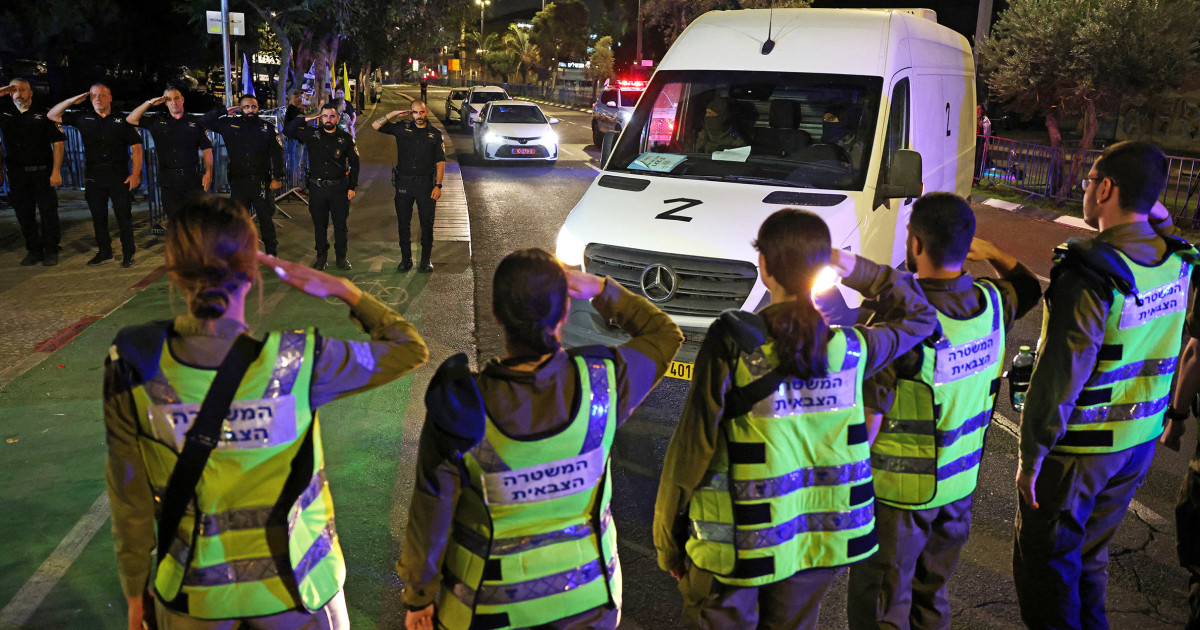So far, seven hostages’ bodies are confirmed to have been sent back from Gaza out of the 28 deceased that were thought to remained the enclave.
“Hamas is required to make all necessary efforts to return the deceased hostages,” the IDF added.
Hamas did not immediately comment on Israel’s statements.
Hamas and the Red Cross have said recovering slain hostages is a challenge because of the widespread destruction in Gaza — a fact that was acknowledged during ceasefire and hostage-prisoner exchange talks.
On Sunday, an Israeli military official said if all of the hostage bodies were not handed over by Monday’s deadline, a designated special force for recovering the bodies would be established and would take action in order to retrieve them.
The news came as Israeli Prime Minister Benjamin Netanyahu warned that Hamas must disarm or face renewed military action amid reports of violence on the streets of Gaza, while confusion persists over whether the amount of aid agreed by Israel is reaching the enclave.

“We agreed to give peace a chance,” Netanyahu told CBS News on Tuesday.
“First, Hamas has to give up its arms,” he added. “And second, you want to make sure that there are no weapons factories inside Gaza. There’s no smuggling of weapons into Gaza. That’s demilitarization.”
President Donald Trump, whose plan called for Hamas to disarm, echoed Netanyahu’s position on Tuesday.
“They’re going to disarm, because they said they are going to disarm, and if they don’t disarm, we will disarm them,” Trump told reporters during a meeting with Argentinian President Javier Milei.
“And it’ll happen quickly and perhaps violently,” he said. “But they will disarm.”
Netanyahu said he heard Trump’s remarks, paraphrasing them as “all hell breaks loose,” before adding that he hoped this wasn’t necessary.
Inside Gaza, Hamas appeared to tighten its control in the enclave, as the group’s internal security organization has urged residents to report “wanted individuals,” including “collaborators” with Israel.
Video obtained by Reuters appeared to show masked gunmen executing several men in a Gaza City street.
At least six, their shirts pulled over their heads, were forced to their knees before being shot. Another video obtained by Reuters appeared to show armed Hamas members patrolling streets in the city.
The slow release of hostages has also sparked fears that Israel could restrict humanitarian aid until the remains of the hostages are returned.
The U.N. said Tuesday it had received a letter from COGAT, the Israeli military’s liaison with the Palestinians, informing them they would half the amount of aid due to the slow release of the remains of hostages.
Uncertainty already surrounds the scale of aid entering Gaza.
At least 600 trucks operated by the United Nations, international organizations, the private sector and donor countries were meant to enter Gaza daily under the ceasefire agreement, an Israeli security official told NBC News on Saturday.
But confusion has persisted over the actual flow of supplies and the accuracy of reported figures.
The United Nations’ humanitarian agency, OCHA, said 817 trucks entered Gaza on Sunday, citing data provided by COGAT.
The U.N. did not independently verify the figures, and COGAT did not respond to a request for more information on the aid.
Meanwhile, crossings were closed Monday for the latest hostage release and again Tuesday due to an Israeli holiday, according to World Food Program spokesperson Abeer Etefa, who said the “scale-up stage” of flooding Gaza with aid had not yet been reached.
Asked whether Wednesday’s deliveries would return to Sunday’s reported levels, OCHA spokesperson Olga Cherevko told NBC News: “We hope so.”

